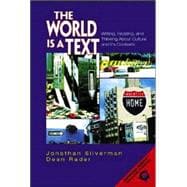
What is included with this book?
The Literature Suite—Social and Economic Class
Student Essay: Archana Mehta, “Society's Need for a Queer Solution: The Media's Reinforcement of Homophobia through Traditional Gender Roles.”
The Simpsons Suite.
Student Essay: Hillary West, “Media Journal: The Rosie O'Donnell Show.”
3. Reading Public Space.Public Space—The Suburban Suite.
Race and Ethnicity—The Multiracial Suite.
The Movie Violence Suite.
Student Essay: Whitney Black, “The Woman Warrior: The Problem of Using Culture to Liberate Identity.”
The Myths of Gender Suite.
Student Essay: Anne Darby, “#27: Reading Cindy Sherman and Gender.”
The Sensation Suite.
Advertising.
Student Essay: Brittany Gray, “Hanes Her Way.”
News/Media.
The Media Manipulation Suite.
Student Essay: Fouzia Baber, “Is Tupac Really Dead?”
Student Essay: Sarah Hawkins, “Right on Target: Revisiting Elvis Costello's My Aim Is True”
Reading Music—The Song Suite.
Student Essay: Virginia Colwell, “Mail-Order Brides: The Content of Internet Courtship.”
The Internet and Identity Suite.
The New copy of this book will include any supplemental materials advertised. Please check the title of the book to determine if it should include any access cards, study guides, lab manuals, CDs, etc.
The Used, Rental and eBook copies of this book are not guaranteed to include any supplemental materials. Typically, only the book itself is included. This is true even if the title states it includes any access cards, study guides, lab manuals, CDs, etc.